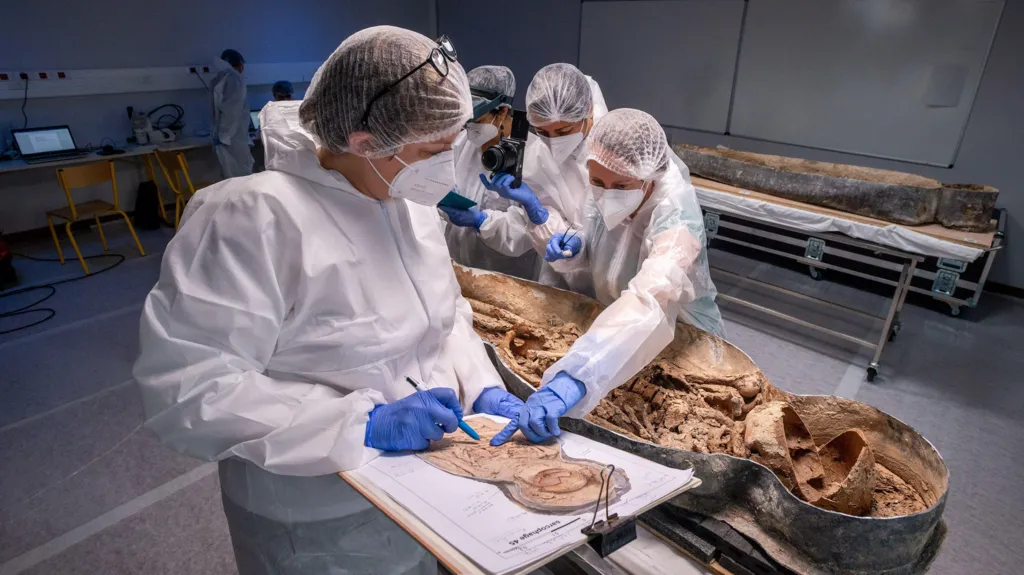Unearthing History: The Discovery of a Renaissance Poet’s Coffin at Notre-Dame
3 min read

During the restoration efforts following the devastating fire at Notre-Dame Cathedral, archaeologists made an extraordinary find: the lead coffin of Joachim du Bellay, a revered French Renaissance poet. This significant discovery was made beneath the transept of the cathedral, where experts are now nearly certain the remains belong to du Bellay, who passed away in Paris in 1560 at around the age of 37.
The catastrophic fire in April 2019 destroyed much of Notre-Dame’s roof and spire, but it also provided a unique opportunity for archaeological exploration. As restoration work continues, the findings from these excavations will be showcased in an upcoming exhibition set to open in November, just before the cathedral’s anticipated reopening.
Joachim du Bellay was born circa 1522 near Angers in western France. Alongside Pierre de Ronsard, he was a founding member of the influential poetic group known as La Pléiade, which sought to elevate the French language in literature, moving away from the traditional use of Latin. Despite the historical records indicating his burial site within Notre-Dame, the exact location of his tomb had remained a mystery until now.
The examination of the skeleton found within the lead coffin revealed important details about the individual’s life. The remains belonged to a man around 35 years of age, who showed signs of having suffered from bone tuberculosis affecting his neck and head. Notably, the findings also indicated that this individual likely spent considerable time on horseback, corroborating with historical accounts of du Bellay’s life. In his later years, du Bellay experienced deafness and severe headaches—ailments that align with the medical evidence gathered from the skeleton.
One intriguing question that arises from this discovery is why du Bellay’s remains were found in this location rather than the side chapel where records suggest he was originally interred. One theory posits that the coffin may have been relocated to its current site after du Bellay’s fame grew, particularly following the posthumous publication of his collected works.
Today, du Bellay’s influence endures; his poetry is still taught in French schools, and several of his works remain well-known. One of his most famous poems, “Heureux qui comme Ulysse” (Happy he who like Ulysses), reflects a deep nostalgia for his childhood home, encapsulating themes of longing and the passage of time.
This discovery not only sheds light on the life and legacy of one of France’s cherished poets but also enriches our understanding of the historical context of Notre-Dame itself. The cathedral has long been a central fixture in French culture and history, and findings such as these provide a poignant connection to the past. As restoration continues, the hope is that this beloved monument will not only be restored to its former glory but will also serve as a testament to the rich tapestry of stories that it holds within its walls.
The upcoming exhibition promises to offer visitors a deeper insight into the findings from the restoration work, showcasing the delicate balance of preserving history while also uncovering new narratives. As Notre-Dame prepares to welcome back visitors, the tale of Joachim du Bellay adds another layer of significance to this iconic landmark, reminding us of the enduring power of poetry and the human experience it captures.